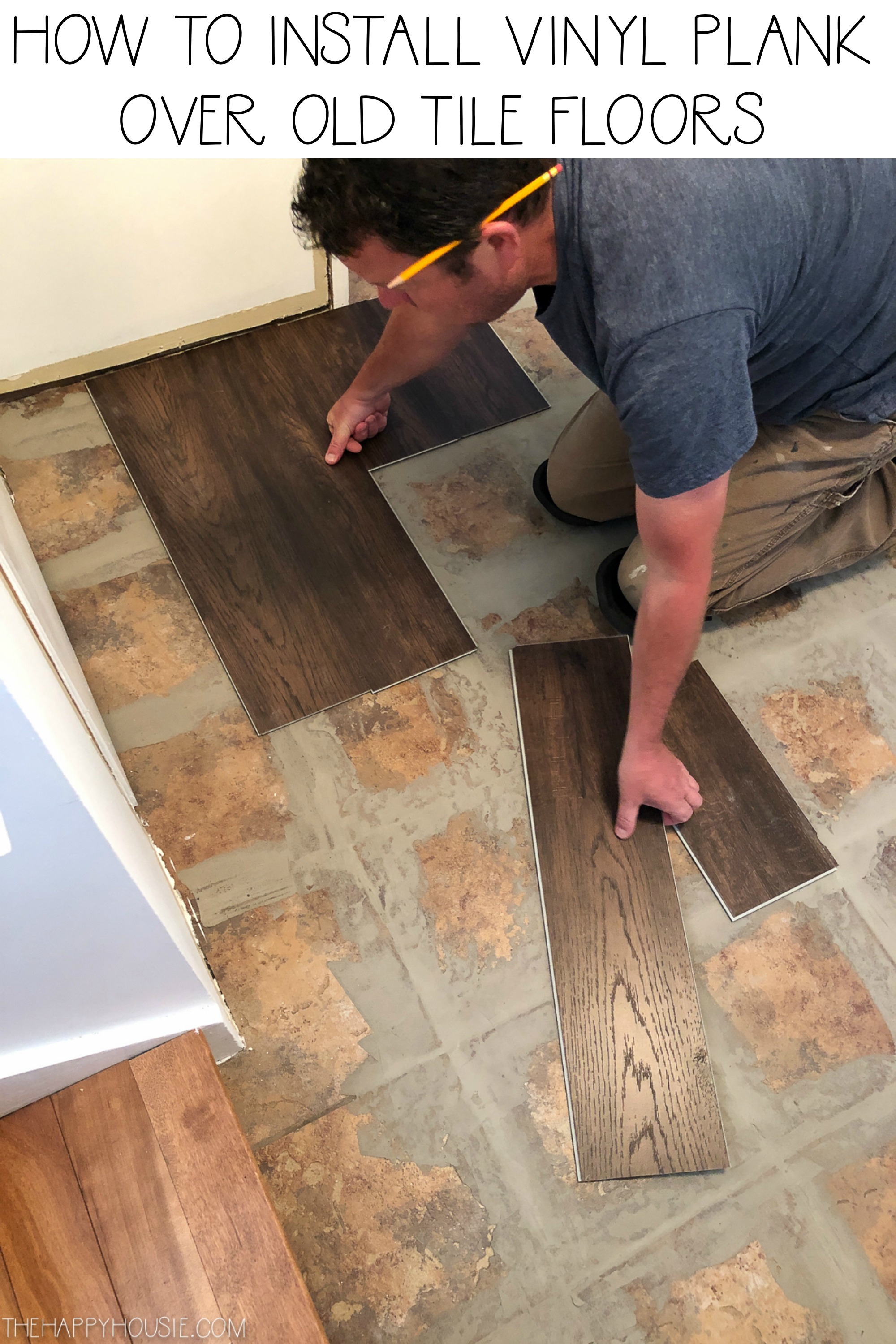You’ve finally decided to upgrade your home’s aesthetic with the timeless elegance of hardwood floors. But there’s a catch: your existing floors are covered in tile. Now you’re left wondering: can I lay hardwood floors over tile? This is a common question, and the answer, like most things in home improvement, isn’t a simple yes or no. This comprehensive guide will dissect the complexities of laying hardwood flooring over tile, equipping you with the knowledge and insights to make an informed decision.

Image: floorflix.com
Let’s face it, ripping out existing tile is a daunting task. But before you get lost in fantasies of a seamless transition, it’s crucial to understand the potential pitfalls and considerations involved in laying hardwood over tile. This guide delves into the intricacies of this project, addressing factors like subfloor condition, existing tile adhesion, and the type of hardwood you choose.
Understanding the Challenges
Laying hardwood over tile presents unique challenges that you must address, ensuring the longevity and stability of your new flooring. Let’s dissect these potential roadblocks and their impact on your project:
-
Subfloor Condition: Before laying hardwood, you need a solid, flat subfloor. Tile is often laid on a concrete subfloor, which can be uneven and prone to cracking. Unevenness or cracks will transfer to your hardwood floor, creating squeaks, instability, and premature wear and tear.
-
Tile Adhesion: A fundamental issue is the bond between the tile and the subfloor. If the tile is inadequately bonded, it can become loose or even detach when you attempt to install hardwood over it. This situation can lead to significant damage to both your new floor and existing tile.
-
Hardwood Thickness: The thickness of your hardwood is critical. Thicker hardwoods can better accommodate unevenness in the subfloor. However, thicker hardwood may raise the floor level significantly, potentially impacting doors, transitions, and even plumbing fixtures.
-
Moisture Barriers: Concrete floors are prone to moisture issues, which can damage hardwood. Your existing tile may have a moisture barrier, but it’s crucial to check and ensure adequate protection for your hardwood.
Assessing Your Options
Now that you’re aware of the hurdles, let’s explore your options for laying hardwood over tile:
-
Option 1: Removal of existing Tile: This is the most straightforward but labor-intensive approach. Removing tile allows you to assess and repair the subfloor, ensuring a solid foundation for your hardwood. It also eliminates concerns about potential problems with tile adhesion. The downside, however, is the dust, cost, and time required for demolition and disposal.
-
Option 2: Laying Over Tile with Thinset: This method involves using a thinset mortar to level the tile surface and create a stable layer for installing hardwood. Thinset is a cement-based adhesive that helps bridge gaps and create a more even surface. However, this approach is not suitable for all tile types, and it’s essential to ensure proper adhesion and leveling for optimal results.
-
Option 3: Using a Leveling Compound: Leveling compound is a fast-drying material that smooths out uneven surfaces. This option can help create a flat, stable surface for hardwood installation. However, it’s crucial to follow the manufacturer’s instructions carefully.
-
Option 4: Installing a Plywood Subfloor: This involves installing a layer of plywood over the existing tile, creating a new subfloor for your hardwood. This option can address unevenness and potential tile adhesion issues. However, it’s a more time-consuming and labor-intensive process, adding to the overall cost.
Factors to Consider:
You’ve learned about the challenges and potential solutions, but several other factors play a crucial role in your decision:
-
Existing Tile Type: Ceramic, porcelain, and natural stone tiles behave differently when it comes to adhesion and compatibility with hardwood. Consider the type of tile you have, its condition, and its potential for movement.
-
Hardwood Type: The type of hardwood you choose impacts its compatibility with existing tile. Solid hardwood floors generally require more preparation due to their thicker profile, while engineered hardwood options might be easier to install.
-
Professional Expertise: Laying hardwood over tile, particularly with thinset or leveling compound, is a complex task best left to skilled professionals. Their expertise ensures proper preparation, installation, and adherence to best practices, maximizing the longevity and stability of your new floor.

Image: viewfloor.co
Expert Insights and Actionable Tips:
Now that you’re equipped with foundational knowledge, let’s integrate expert tips to navigate this project successfully:
-
Prioritize Subfloor Inspection: Before even considering installing hardwood, it’s crucial to have a professional inspector assess the existing tile and subfloor. This is the first step towards ensuring a solid foundation for your new floor.
-
Evaluate Existing Tile Adhesion: This involves conducting a simple adhesion test by tapping the tile. If it sounds hollow or shows signs of movement, consider removing the tile or using a leveling compound to address the issue.
-
Don’t Overlook Moisture Protection: Regardless of the method you choose, ensure adequate moisture protection for your hardwood. This may involve applying a moisture barrier or using a specific type of hardwood that’s designed for moisture-prone areas.
-
Invest in Quality Materials: The quality of your materials directly impacts the longevity and aesthetics of your hardwood floor. Choose reputable brands, use high-quality thinset or leveling compound, and prioritize hardwood with a solid reputation for durability.
Can You Lay Hardwood Floors Over Tile
Conclusion:
Laying hardwood over tile is a complex but achievable project. By understanding the challenges and considering various factors, you can make an informed decision that best suits your needs and budget. Remember, every project requires careful planning, thorough preparation, and, when in doubt, professional expertise for a flawless and durable outcome.






